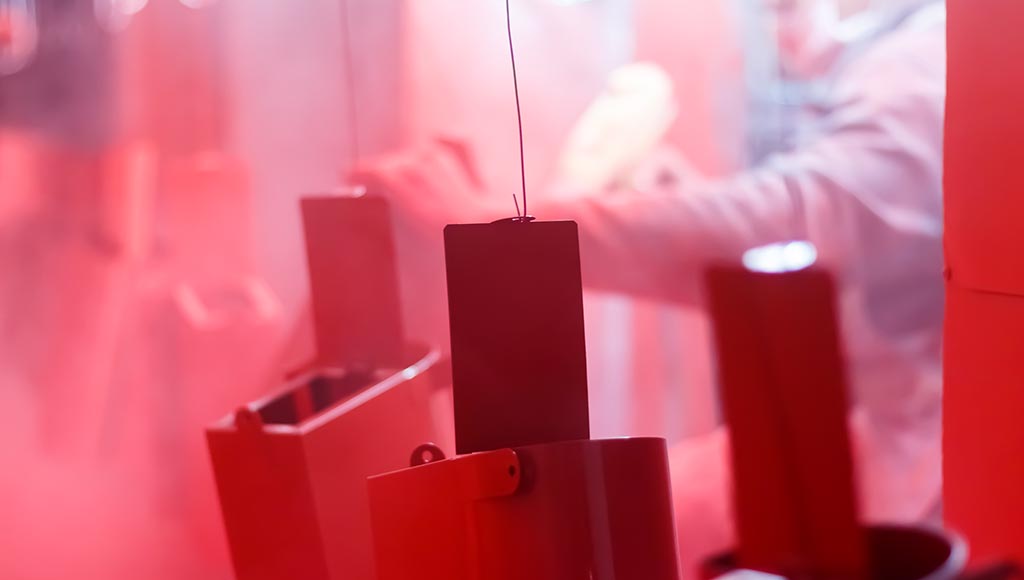The MST of China has
announced that an affiliated unit had made breakthroughs in the key
technological research on premium organic fluoride material, developing
China's stand in the international power coatings market.

At
the end of January, 2018, the Ministry of Science and Technology (MST) of the
People's Republic of China has announced that an affiliated unit had made
breakthroughs in the key technological research on premium organic
fluoride materials, such as the synthesis
of special fluorine-enriched monomers as well as the polymerisation,
modification and large-scale production technology of premium organic fluoride
materials. Moreover, the unit has built exemplary production lines of high
as well as low-temperature-resistant fluoroelastomer, fluorine-silicon coatings
and modified polyvinylidene fluoride resin for power coatings.
According
to market intelligence firm CCM, during the 13th Five Year Plan period (2016–2020),
the MST drafted a specialised plan that focuses on technical innovations about
advanced structure & composite materials and new-type functional
intelligent materials to boost the domestic industries of fluorochemicals and
premium organic fluoride materials.
Fluorine-containing
polymers are essential in the world of advanced coatings. After all the
synthesis of these special chemical polymers has been largely prompted by the
very high thermal stability of PTFE. The focus lies hereby on the development
as possible heat-resistant materials in
the coatings industry.
The
technology that deals with fluorine-containing polymers is already about 70
years old. Notably, the fluoropolymer commercial markets show a very
healthy growth rate in the large markets worldwide, increasing larger than the
average GDP in most cases. The reasons for the huge attention can be found in
the ability to design fluoropolymer properties that continue to be used in a
wide range of industrial technologies. The main purpose is to better control
their unique optical, electronic, processing, environmental stability, and
surface properties. Fluorine-containing compounds have found a wide range of
applications in today’s industry, ranging from modern drugs to polymeric
materials.
A fluoroelastomer is a special purpose
fluorocarbon-based synthetic rubber. It has wide chemical resistance and
superior performance, especially in the high-temperature application in
different media. Fluoroelastomer is also called fluorocarbon elastomer. These
chemicals were developed in the 1940s and 1950s of the heat-resistant resin
polytetrafluoroethylene, and then subsequently sold under the trademark Teflon.
Polyvinylidene fluoride
(PVDF) is a typical non-reactive thermoplastic fluoropolymer, which can
be processed using the polymerization of vinylidene difluoride. PVDF is used as
a speciality plastic. Thanks to its unique characteristics, the material is
normally utilized for applications requiring a very high purity, as well as
resistance to solvents, acids and bases. Compared to other common
fluoropolymers, PVDF has a very low density.
As
a tough plastic that is resistant to flame, electricity, and attack by most
chemicals, PVDF is injection-moulded into bottles for the chemical industry and
extruded as a film for electrical insulation. Its flame resistance makes it
especially desirable for insulating wire in buildings and aircraft. PVDF is
also piezoelectric, changing its electrical charge in response to pressure and,
conversely, exerting pressure in response to an applied electric field. This
unique property makes it a good material for transducers in devices such as
headphones, microphones, and sonic detectors.
It
is available as piping products, sheet, tubing, films, plate and an insulator
for premium wire. It can be injected, moulded or welded and is
commonly used in the chemical, semiconductor, medical and defence industries,
as well as in lithium-ion batteries. It is also available as a cross-linked
closed-cell foam, used increasingly in aviation and aerospace applications.
As
a fine powder grade, the chemical is an ingredient in high-end paints for
metals. These PVDF paints have extremely good gloss
and colour retention. PVDF membranes are used for western blots for
immobilization of proteins, due to its non-specific affinity for amino acids.
About this article
The
information for this article comes from CCM, China’s leading market
intelligence provider for the fields of agriculture, chemicals, food and
feed.
Take
part of the discussion by joining our LinkedIn or Facebook group on China’s
chemicals market.
Follow
CCM on Twitter: @CCM_Kcomber